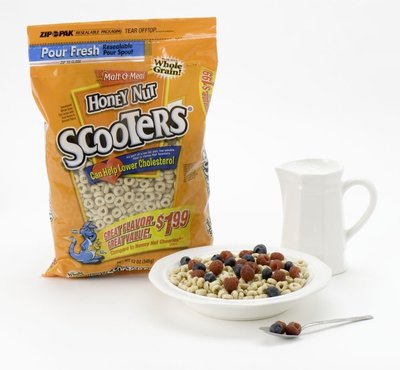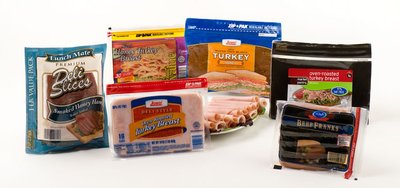Resealable packages: a frustration-free alternative
By Glenn Woodworth, Managing Director, Blue Sky Packaging representing Zip-Pak in Australia and New Zealand
Friday, 30 November, 2012
As everyday consumers, we are all too familiar with the frustration that accompanies a hard-to-open package. Clamshell packaging is notoriously difficult to open, but other formats like candy packets or frozen meat products can be equally challenging.
Surveys over the years have found a significant and growing number of consumers have trouble opening packages, with many requiring assistance and others injuring themselves in the process. Inevitably, consumers are left feeling helpless and frustrated.
This experience has been termed ‘package rage’ and refers to the anger and frustration experienced by consumers resulting from their inability to successfully remove contents from a hard-to-open package. Coffee packaged in metal containers, shrink-wrapped cheese and cereal bags are amongst common complaints.
The trend of consumers shying away from hard-to-open packages suggests they are turning to competitor products that feature better openability and accessibility instead. Brands take note: packaging is an important marketing tool and should be a key consideration during product development. Specifically, food packaging should be designed with the young and elderly in mind, since they represent a large proportion of today’s populations, in both emerging markets like China and more mature markets like Australia and New Zealand. These two age groups also influence other consumers’ purchasing decisions, as parents and working adults seek out products that their young children or elderly family members can easily access and consume. The growing population of older individuals is also increasingly independent, with many living on their own and doing their own grocery shopping.

Besides the ageing demographic, Australia is also concerned with providing accessible packaging for consumers with disabilities. It has been found that one in three healthy Australians over the age of 50 struggles with packaging, in addition to the 6.4 million Australians living with arthritis or disability. The Ease-of-Use program was established by Arthritis Australia and Arthritis New Zealand back in 2009 in a bid to promote user-friendly products. Since then, Nestlé has also joined the program to evaluate the packaging of many of its major products and has invested in designing packaging that is easy to open for various demographic groups. This move shows that companies like Nestlé are starting to hear the voices and demands of their consumers, and innovation is a necessary investment for companies that seek to retain consumer loyalty and win new consumers.
Increased convenience is always appreciated by those with arthritis or disability, as these consumers may not be able to as easily open and use packages. When manufacturers consider this group, they should think about creating a universal package design that can be opened by consumers of all ages, from children to the elderly. This will ensure convenience in terms of portability, easy storage, opening and closing.
The rise of snack culture
Increased income levels across the Asia-Pacific region have created a greater demand for food products that are convenient, particularly in the snack category. Products consumed out of home have become a major area of growth because modern consumers are spending less time at home and more time on the go. Research has also found increased snacking in the workplace in both developing and developed economies around the region. With spending on these convenience foods rising, manufacturers must accurately identify and address consumer needs in order to remain competitive with other brands in the market.
Packaging should be a key consideration for snack brands. Manufacturers need to make sure the package matches the product: if the product is supposed to be easy to consume, the packaging should also be easy to open. Resealable packages, in particular, address the need for portability and convenience.
Consumers appreciate packages with resealable options because, in addition to portability, these packages enable them to conveniently store unconsumed contents. Resealable packaging also provides portion control options and lets shoppers indulge in their favourite snacks without fear of overconsumption.
Battle of the food packages
Today, conservative estimates suggest that 70 to 75% of all purchasing decisions are made at the point of purchase - consumers decide between the brands in front of them at the store itself. This means that packaging should attract and engage the often overwhelmed consumer’s attention in the space of a few seconds. Shelf impact is especially important in Asian marketplaces as these are crowded and competitive landscapes with brands increasingly investing heavily in graphics and innovative technology for their packaging. In order to stand out, manufacturers must offer something unique to consumers in order to encourage them to select the product.

The best way for a package to stand out is through improved functionality - packaging that is functional and intuitive tends to fare better in the competitive shelf landscape. Contrary to popular belief that packaging should be fanciful and intricate to attract the consumer, simplicity is frequently preferred. Ideally, food packaging should be simple and still able to fulfil the basic function expected of any food package: to keep contents fresh even after opening. However, good packaging accomplishes this and simultaneously responds to the trends and demands of consumers while prompting sales. The best packaging keeps contents fresh but also addresses openability, portability and convenient storage options.
Enhancing your brand
Many brands have found that a simple packaging modification can revive a product. Value-added resealable closures are proven and effective ways to refresh existing packaging and maintain the current market share. At the same time, the obvious convenience afforded by such packaging also attracts new consumers to purchase the product. In spite of the obvious benefits of resealable packaging, however, many manufacturers are still unsure about how to integrate zippers into their packaging.
It is a common belief that easy-open and other value-added features can add extra costs to packaging. However, flexible packaging holds an overall total cost of ownership advantage in terms of reduced shipping and material costs, lowering production costs in the long run. In fact, it has been estimated that one truckload of flexible film equates to 20 truckloads of rigid containers. Likewise, studies conducted by Purple Research and commissioned by Zip-Pak have found that consumers are willing to pay more for convenient packaging with a press-to-close or slider zipper.

The cost associated with implementing resealable technology depends largely on manufacturer needs and requirements. There is a wide range of resealable products and value-added features that have been developed to suit almost any application. It is important to match the need with the zipper, as powdered products, frozen applications, bulk goods or high-temperature applications like retort and microwave require very different solutions.
Avoid cutting corners: how to adopt resealable technology
Almost any flexible package can benefit from a resealable closure, whether or not incorporating a zipper was part of the initial packaging design. There are two ways to make the switch. Manufacturers can either invest in new machinery or opt for the more popular option of retrofitting existing packaging lines with zipper applicator equipment. To achieve the best results, it is important to work with a provider who can consult on machinery, materials and package design to allow for the seamless integration of resealable technology.

The biggest problems with adding closures lie in working with inexperienced operators and implementing faulty package designs. Many consumers also experience frustration with value-added resealable closures that fail to work after even a single use. Most often, this is due to machinery that is not properly set up to apply the zipper. Further, for a closure to work effectively over the life of the product, the package must be designed specifically to accommodate the feature. As the only zipper supplier with an in-house equipment division, Zip-Pak is equipped to work directly with manufacturers to ensure machinery is properly installed and operators are adequately trained. Further, the company employs experts in package design to assist food brands in producing a package with a premium zipper that works once consumers bring it into their homes.
For businesses looking to make a successful transition, here are a few tips on what to consider:
- Keep it simple: Don’t crowd your package with marketing messages - minimalistic packaging can effectively indicate quality. Highlight the convenience of your package with an instantly recognisable resealable closure.
- Match the zipper to the application: Zippers behave differently with various films and the products they package. Make sure you are choosing the right closure for your product.
- Understand your packaging system: Additional training and knowledge is required for operators on zipper-capable packaging systems. While operators are generally reliable and knowledgeable, they may lack the expertise to correct closure application issues. Make sure your supplier is also a specialist who can work with and consult your operators to ensure smooth operations.
- If you are producing a premium product, make sure you back that up with premium packaging with value-added features that work every time.
- Employ universal design: If your package can be opened and resealed by children and the elderly, it will be easily accessed by everyone else in between.
Simplicity is key
Today’s consumers live in a world of convenience and choice. For any given product, they are faced with a variety of options and differentiation is largely attributed to branding and packaging. Brands must realise that consumer satisfaction goes far beyond product. Difficult packaging threatens brand loyalty because package rage may lead consumers to competing easy-open brands. Packaging innovations can significantly improve consumer experiences, and with today’s advancements in technology, there really is no reason why consumers should experience such frustration. After all, no one has ever complained that a package kept food too fresh or was too easy to open.
Getting the right texture: toolkit to help create more appealing food
The FaBA Texture Library Toolkit has been developed to help manufacturers improve the texture of...
What's new on the shelf: new food products for Easter
From spicy snacks and creative Easter treats to icy and elevated flavours for winter, here's...
Six of the latest food products hitting the supermarket shelves
February arrives with a variety of new food products hitting supermarket shelves, including some...














